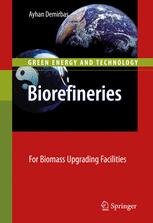

Most ebook files are in PDF format, so you can easily read them using various software such as Foxit Reader or directly on the Google Chrome browser.
Some ebook files are released by publishers in other formats such as .awz, .mobi, .epub, .fb2, etc. You may need to install specific software to read these formats on mobile/PC, such as Calibre.
Please read the tutorial at this link: https://ebookbell.com/faq
We offer FREE conversion to the popular formats you request; however, this may take some time. Therefore, right after payment, please email us, and we will try to provide the service as quickly as possible.
For some exceptional file formats or broken links (if any), please refrain from opening any disputes. Instead, email us first, and we will try to assist within a maximum of 6 hours.
EbookBell Team

0.0
0 reviewsClimate change, environmental impact and declining natural resources are driving scientific research and novel technical solutions. Green Energy and Technology serves as a publishing platform for scientific and technological approaches to "green" - i.e., environmentally friendly and sustainable - technologies. While the main focus lies on energy and power supply, the series also covers green solutions in industrial engineering and engineering design. Green Energy and Technology is a monograph series addressing researchers, advanced students and technical consultants, as well as decision makers in industry and politics. The level presentation ranges from instructional to highly technical.
Industrial biorefineries have been identified as the most promising routes to the creation of a bio-based economy. Partial biorefineries already exist in some energy crop, forest-based, and lignocellulosic product facilities. Biorefineries: For Biomass Upgrading Facilities examines the variety of different technologies which integrated bio-based industries use to produce chemicals; biofuels; food and feed ingredients; biomaterials; and power from biomass raw materials. These systems can be improved through better utilization of agricultural residues and solid wastes, and through the optimization of total value-added products.
Conversion technologies are also covered, since biomass can be converted into useful biofuels and biochemicals via biomass upgrading and biorefinery technologies. Upgrading processes discussed in this book include fractionation, liquefaction, pyrolysis, hydrolysis, fermentation, and gasification.
Biorefineries: For Biomass Upgrading Facilities will prove a practical resource for chemical engineers, and fuel and environmental engineers. It will also be invaluable in academic fields, providing useful information for both researchers and students.